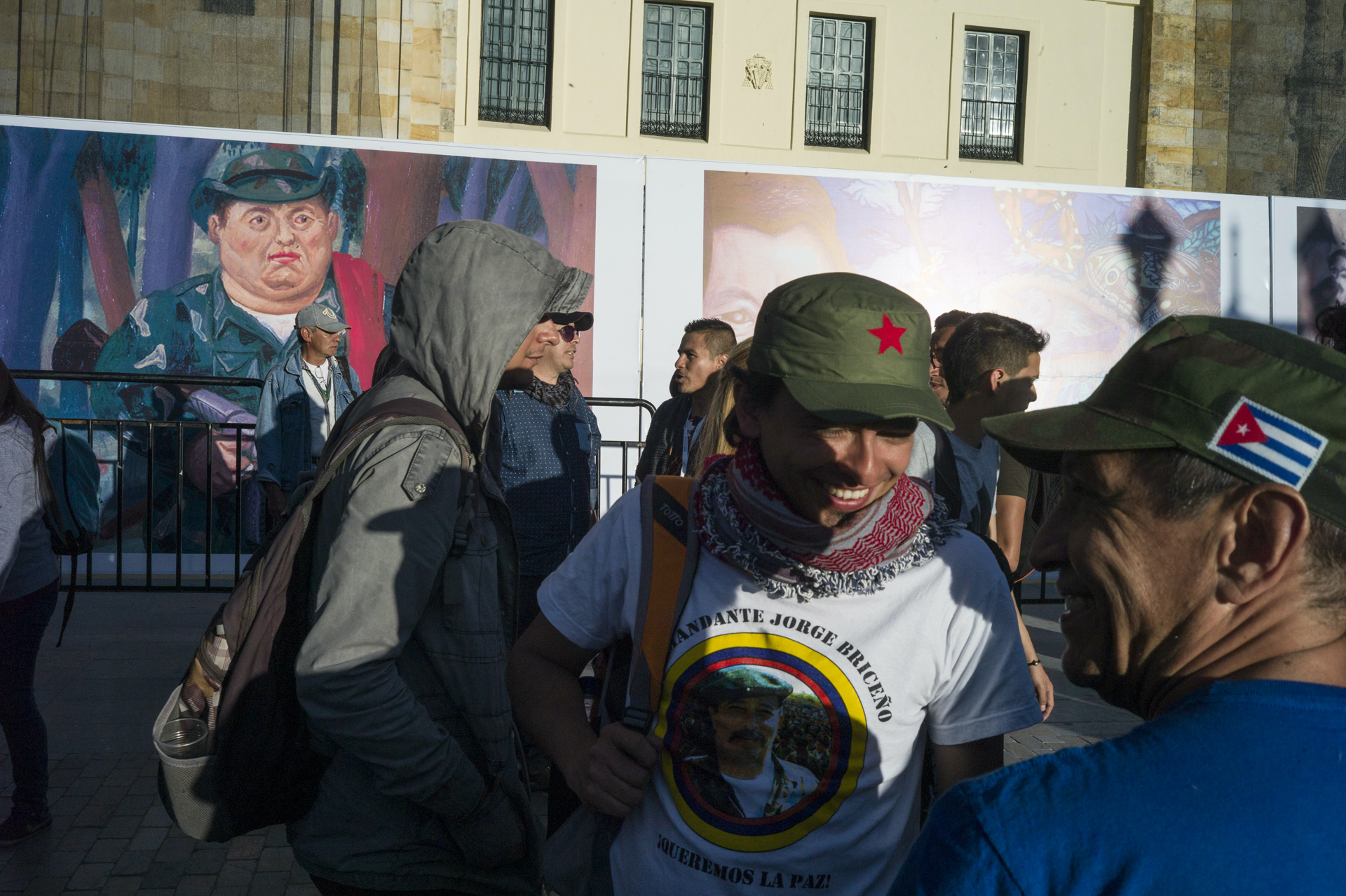
Colombia
Are you still a guerrilla?” I asked. We were sitting in an office in the UN compound in Bogotá. Lozada smiled and replied: “We will carry on with the guerrilla way of life and way of interpreting things, but one begins to be aware that there is a new way of doing things.” He still had to travel around with armed security guards, but now he did so with a special protection unit that was—in a surreal twist— provided for him by the Colombian government. “I’ve begun to realize that I can now go and visit my family, for instance, without fearing that something might happen to me at the hands of the state and this is creating a new expectation of how life can be.”
— Jon Lee Anderson, The Eternal War

Background
1550-1810
Spain colonizes regions of the Americas
The Viceroyalty of New Granada includes modern Ecuador, Venezuela, and Colombia.
1810
Spanish-Americans declare the independence of New Granada
New Granada fractures as the Napoleonic wars stretch Spain thin.
1811-1816
Self governance devolves into civil war in Colombia
Federalist, centralist, and royalist factions all fight one another, leaving Spain an opening to reconquer the colony.
1819
Simon Bolivar leads rebels to victory against Spain
1819-1831
Bolivar’s Gran Colombia crumbles to sectarian bickering
1860-1862
The Granadine Confederation transforms into the United States of Colombia
A civil war between federalist conservatives and liberals sparks the transformation.
1886
Further civil war transforms the United States of Colombia into the Republic of Colombia
Conservatives seize power
1889-1902
The Thousand Days’ War – civil war between Liberals and Conservatives, claims over a hundred thousand lives
1928-1933
Labor issues rise and an economic crisis opens the window for Liberal rule
1946
Conservative party rule returns as Gaitan emerges as the new Liberal leader
War
1948
Gaitan is assassinated, sparking the beginning of La Violencia, a decade of internal conflict
The country once again fractures along Liberal and Conservative lines as massive riots break out in Bogota in the immediate aftermath of the assassination
The chronic violence of his birthplace was an enduring touchstone for the late Colombian novelist Gabriel García Márquez. In his masterpiece, One Hundred Years of Solitude, Colombia’s two traditional political forces, the Liberals and Conservatives, are engaged in eternal warfare that flares up and dies in a never-ending cycle, like seasonal hurricanes, violently shaping and ultimately overwhelming the lives of his characters.
Describing the epic life of one of his most memorable fictional personalities, García Márquez wrote: “Colonel Aureliano Buendia organized thirty-two armed uprisings and he lost them all. He had seventeen male children by seventeen different women and they were exterminated one after the other on a single night before the oldest one had reached the age of thirty-five. He survived fourteen attempts on his life, seventy-three ambushes, and a firing squad. He lived through a dose of strychnine in his coffee that was enough to kill a horse…
Although he always fought at the head of his men, the only wound that he received was the one he gave himself after signing the Treaty of Neerlandia, which put an end to almost twenty years of civil war. He shot himself in the chest with a pistol and the bullet came out through his back without damaging any vital organ. The only thing left of all that was a street that bore his name in Macondo.”
García Márquez’s fiction was a florid reimagining of Colombia’s history. The novelist was born in 1927, and he died in 2014, at age 87, and for most of that time, Colombia was at war with itself in one way or another. Behind the scenes, García Márquez made several personal attempts to broker peace between the warring factions. Although those efforts ultimately failed, he never stopped trying, and he acknowledged ruefully that he had a reputation as “Colombia’s last optimist.”
— Jon Lee Anderson, The Eternal War
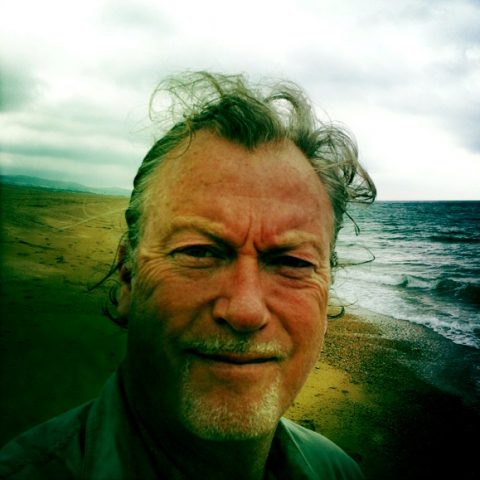
Jon Lee Anderson has known Colombia since he was four years old, when his diplomat father was assigned to Bogotá and his family moved there. He has reported frequently on Colombia for The New Yorker, paying close attention to the ebbs and flows in its quest for peace. Anderson began his journalism career in 1979 in Peru.His books include: Che Guevara: A Revolutionary Life, The Fall of Baghdad, and The Lion’s Grave: Dispatches from Afghanistan.
1948-1958
200,000 Colombians die during 10 years of La Violencia
A conservative dictatorship assumes control of the government as leftist groups fail to demobilize in 1953
1958
Conservatives and Liberals form the National Front to end the conflict
Communist factions, well organized in rural areas, continue to fight this new united government.
Colombians often trace the start of their country’s strife to 1948, when the charismatic Liberal politician Jorge Eliecer Gaitan was assassinated, leading to a decade-long civil war between Liberals and their Conservative rivals. The bloodletting, which resulted in at least 200,000 deaths, became known simply as La Violencia. It ended when the two parties agreed to a non aggression pact, leading to Colombia’s longest period of uninterrupted democratic rule, from 1958 until the present. Paradoxically, this period has also been one of Colombia’s bloodiest, with a half-dozen guerrilla insurgencies, as well as narco violence, fracturing its peace. The violence has been both deep and broad: huge swatches of the countryside have been de facto battlegrounds where insurgents and government soldiers have fought it out, and where civilians were cannon fodder for both sides. Since 1958, well over a quarter of a million Colombians have been killed for political reasons, with countless more wounded, tortured, imprisoned, or driven into exile. Over seven million Colombians—about one-seventh of the population—have been displaced from their homes, more than anywhere else in the modern world, except for war torn Syria.
In this period, Colombia became an international byword for murderous violence, producing a dismal new lexicon. It includes terms like la corbata colombiana— the Colombian necktie, introduced during La Violencia, describing a form of political murder that involved slitting people’s throats and pulling their tongues out through the hole in the neck. La motosierra (literally, the chainsaw) was given new meaning in the 1990s by the country’s merciless right-wing paramilitary death squads, commonly referred to as paracos, when they used it to describe the dismembering of live victims. Dale taladrín plays on the word taladro, or electric drill—as in “give him the drill.” The latest addition to this sick litany are the casas de pique—chop houses— where the present-day narco paramilitaries take victims to chop them to pieces.”
— Jon Lee Anderson, The Eternal War
1959-1964
The Colombian government, advised by the US Military, develops “Plan Lazo” to defeat Colombian Communists
The plan involves military and para-military operations to mount armed opposition to rural Communist enclaves.
1964
The Colombian Army attacks the Communist community of Marquetalia
The attack marks the symbolic beginning of the modern Colombian conflict. The FARC, ELN, and EPN, separate communist resistance groups, form in the wake of the attack.
1970
A controversial presidential election sparks the new tensions within the national front
The Liberal favorite is defeated by a Conservative.
1970-1978
M-19, a guerrilla group inspired by the 1970 election, emerges in a string of robberies and kidnappings
By 1978, M-19 evolves in capability, stealing weapons from the Colombian Military.
1978
Newly elected Liberal President Turbay declares a security state
The new President expands military power.
1980
M-19 guerillas storm the Dominican Embassy and take 57 hostages
Turbay negotiates the release of the hostages in exchange for the release of guerrilla prisoners.
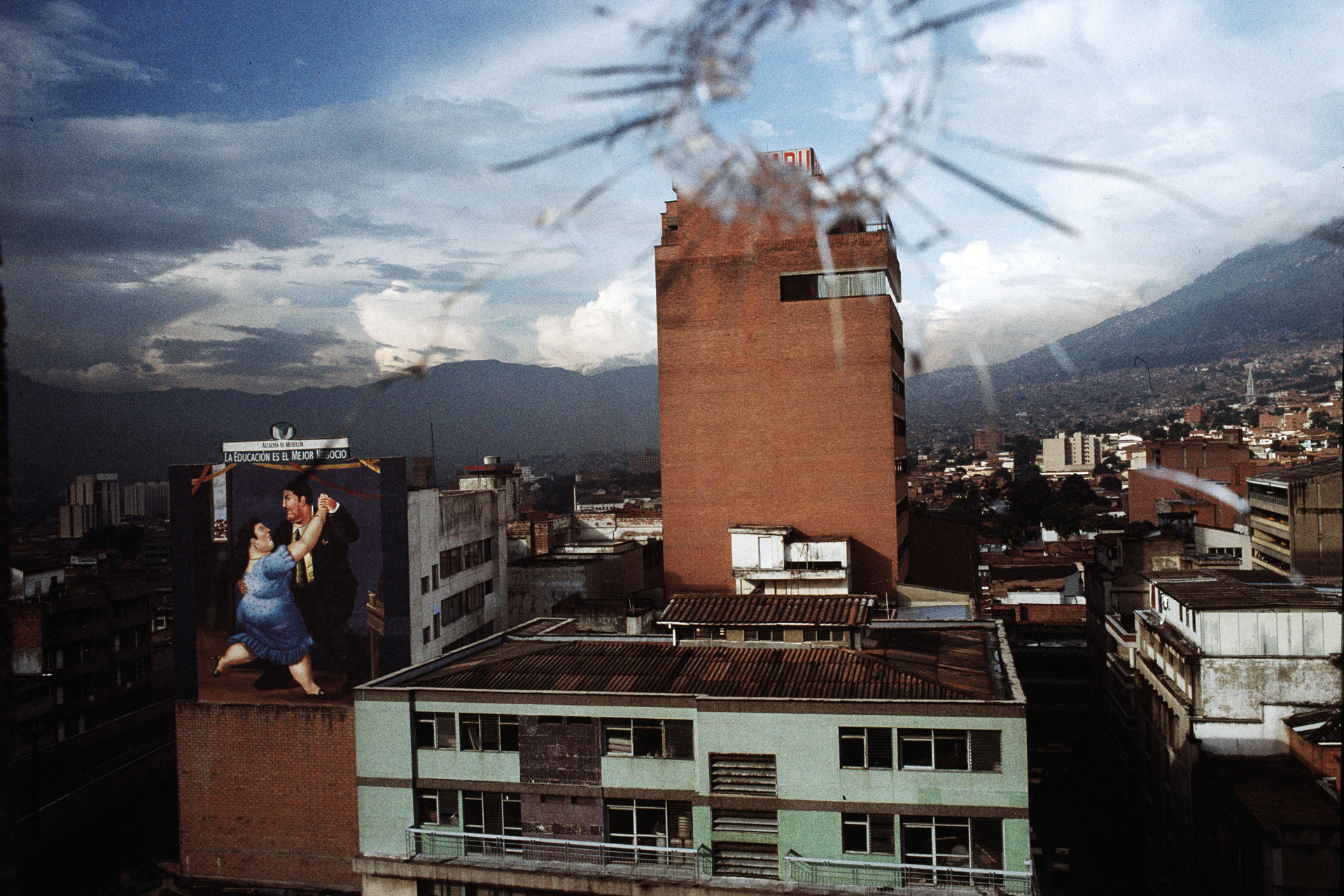
1982-1984
Conservative President Belisario Betancur intiates a peace process
He attempts to bring FARC, M-19, and others into the political process.
1984
Pablo Escobar, drug lord, orders Justice Minister Rodrigo Lara assassinated
The killing forces the Betancur government to respond with harsher measures against drug traffickers.
1985
Betancur’s peace process crumbles and M19 seizes the Palace of Justice
The massive hostage-taking is suspected to be at least partially funded by Escobar. The Colombian army attempts an assault on the building, which results in the deaths of 181, including nearly half of the judges of Colombia’s supreme court.
1986-1987
A new Liberal President, Virgilio Barco, manages to to bring M19 and the EPL into the political fold
The party established in Betancur’s tenure, the UP, gains traction in elections before systematic assassinations by right-wing paramilitaries and organized crime claim more and more candidates.
1980s
Drug baron Pablo Escobar supplies more than 80% of the cocaine trade in the US becoming one of the 10 richest people in the world
He terrorises any opposition and is believed to be responsible for thousands of deaths.
1986-1990
An estimated four to six thousand members of UP are assassinated
The assassinations include multiple presidential candidates from Colombia’s only non-violent communist party.
1990-1998
FARC and the ELN grow and expand operations
Attempts at talks and negotiation falter under the Gaviria and Samper presidencies. Drug profits provide consistent income to the FARC.
1993
Medellin drug-cartel leader Pablo Escobar is killed in a shoot out with police
1998-1999
President Pastrana initiates a new round of peace talks
The FARC and the new administration agree to create a demilitarized zone.
2001
Peace talks progress with prisoner exchanges and extensions of the DMZ
Tensions remain as kidnappings and hijackings continue.
2002
Pastrana’s peace talks dissolve under pressure from FARC actions
The army quickly moves on the DMZ as full hostilities resume. Hardliner Alvaro Uribe wins the presidency on an anti-FARC platform, utilizing post 9/11 anti-terrorist sensibilities.
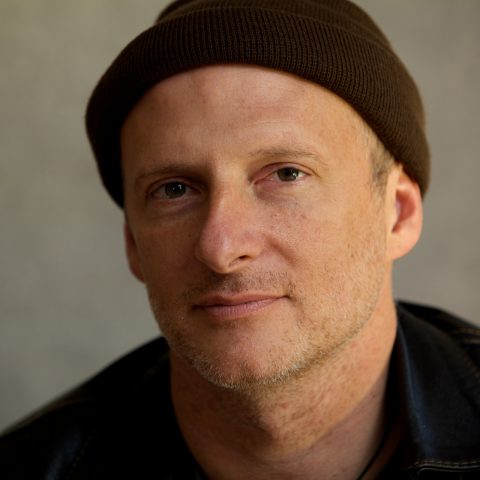
Stephen Ferry has documented the Colombian conflict from 1997 to the signing of the Havana Peace Accords and has followed the peace process with great interest and hope. His work has been published in The New York Times, National Geographic, GEO, and Time. His book Violentology: A Manual of the Colombian Conflict is the product of 10 years of documentation of the armed conflict in Colombia.
2002-2005
Uribe steps up military campaign against FARC, supported by the US
2004-2006
Right wing paramilitaries begin to demobilize
2008
FARC sustains losses in its high command
A Colombian military raid kills second in command Raul Reyes, and leader and founder Manuel Marulanda dies of a heart attack. Colombian forces rescue a handful of high-profile hostages, some who had been in FARC captivity for years.
2010
Juan Manuel Santos, Uribe’s defence minister, wins the presidency
Santos begins to change tone at the start of his tenure, opening the door to new talks.
2011
Exploratory meetings take place between Colombian and FARC representatives
Secret meetings establish Havana as the meeting ground. FARC killing of leader Alfonso Cano is sanctioned by Santos.
In Colombia, when I went to work with President Juan Manuel Santos in 2011, he revealed to me that the government had a secret channel to the FARC. This channel, too, was fundamental in exploring whether talks were possible.
Governments are always anxious to hide such contacts. Every Spanish prime minister after Francisco Franco, up until Mariano Rajoy, engaged in talks with the Basque terrorist movement Euskadi Ta Askatasuna (ETA, Basque Homeland and Liberty), but they all denied it. Adolfo Suarez, the first democratically elected prime minister after Franco, stood up in the Cortes Generales and denied that he had met with the ETA. The leader of the opposition, Felipe Gonzalez, got to his feet and said, “That’s funny—you told me over dinner last night that you had.”
Such exploratory conversations can last a long time, but the time must be right to enter into negotiations. Experience suggests that two factors need to be in place if peace negotiations are to be successful. The first is what academics call a mutually hurting stalemate—that is, not just a stalemate, but one in which both sides perceive that they are paying a price and want the conflict to stop.
The second determining factor is having the right leadership.In Colombia, only a president like Juan Manuel Santos could have made peace with the FARC, because he was prepared to be bold and risk even his reelection in the interest of completing the peace negotiations, despite the views of his close advisers that he should run on a safe platform such as the economy.”
— Jonathan Powell, Building The Tunnel
2012
Peace negotiations officially begin in Havana
FARC officially outlaws extortion via kidnapping in a gesture of goodwill.
2012-2015
Talks progress slowly as guerrilla and military actions threaten to derail
A series of unilateral ceasefires begins to calm tensions, despite kidnappings and de-escalatory periods killing momentum.
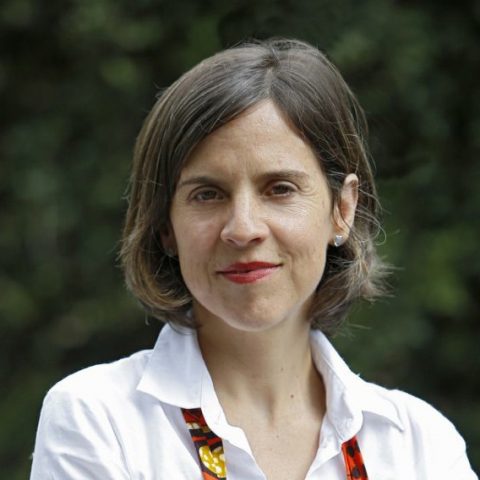
Margarita Martinez is a Colombian documentary filmmaker and journalist. She filmed the peace talks in Havana, where the opposing factions were often in danger of stymieing the talks through intransigence and an obstinance in seeing the other’s perspective. Her film The Negotiation was released in 2018.
The experts say that all high-stakes negotiations have both a formal and an informal aspect. What happens at the negotiating table is important, but so is what happens over coffee in the morning in the halls, over lunch at midday, or in the bar at the end of the night. Hardened enemies find small ways to find the humanity in each other and to build trust. Personal chemistry, the experts argue, is what cuts through the tension. Charismatic leadership can enable two opposing sides to break through, as Padraig O’Malley shows in his account of the 1997 gathering in South Africa that led to the start of talks ending the conflict in Northern Ireland (see “The Narcissism of Small Differences”).
For the first two years (2012-14), the Colombian government delegation— headed by de la Calle and High Commissioner for Peace Sergio Jaramillo—almost totally controlled negotiations at the table and, in fact, prevented any chemistry from developing. Jaramillo had assembled an extraordinary group of technocrats he had nurtured starting in 2004 as the head of the Fundacion Ideas para la Paz (FIP, Ideas for Peace Foundation), then at the Defense Ministry and in other positions. Later, he became vice minister of defense and national security adviser. Like many Colombians, he viewed the previous attempt at peace, in 2000, as a show of whiskey-drinking braggadocio that yielded only disaster: the escalation of violence. His efforts to avoid duplicating such unsuccessful tactics may have suppressed the ability of the opposing sides to forge human connections. But Jaramillo went further than discouraging shows of bonhomie, insisting on excruciatingly secretive practices. He perhaps had good reason—the popular former president and senator Alvaro Uribe Velez opposed negotiating with the FARC, and his objective was rendition, not negotiation.
The Havana dynamics—the secrecy, the formality, the stasis—did not really begin to shift until after 32 months of a terse standoff. The negotiators had dispensed with the first three items of the six-point agenda set out at the beginning; each point took about six months. Following that year and a half of talks came the most important and difficult point—justice. After 14 months of negotiation, by mid-2014 the parties in Havana were at an impasse, unable to find a way to balance the sentences of guerrillas, agents of the state who had committed crimes against humanity, and individuals responsible for political crimes. President Santos became restless, fearing that his presidency would end without having had adequate time to implement any solution the negotiators managed to arrive at.”
— Margarita Martinez, Finding Humanity in Havana
2015
A FARC-initiated ceasefire collapses in a string of bloody attacks and retaliations
Santos stays the course despite depleting domestic support for the talks and continues de-escalation.
Peace
2016
FARC units begin a trek out of the jungle as the first step towards demobilisation and the transformation into a political rather than revolutionary entity
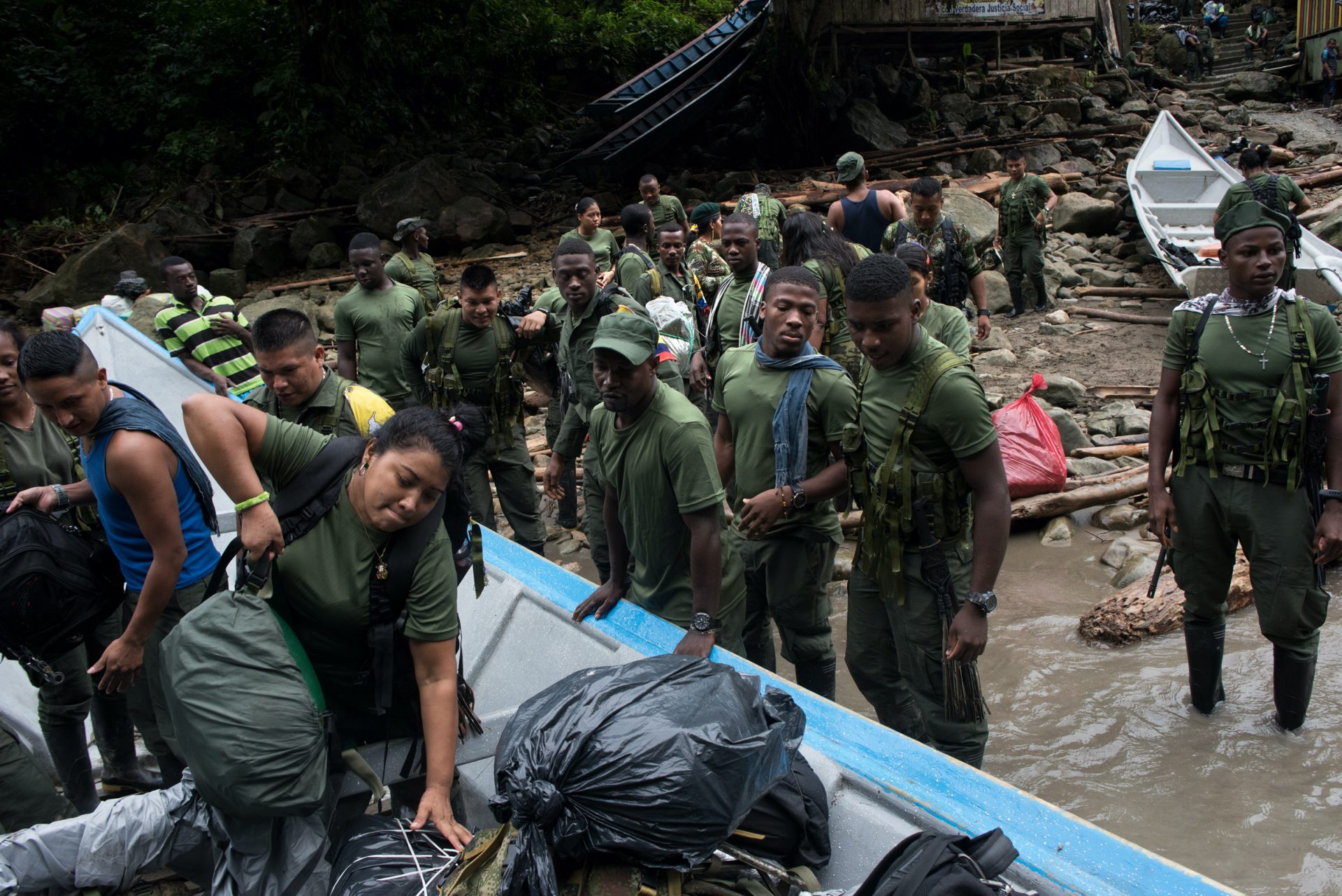
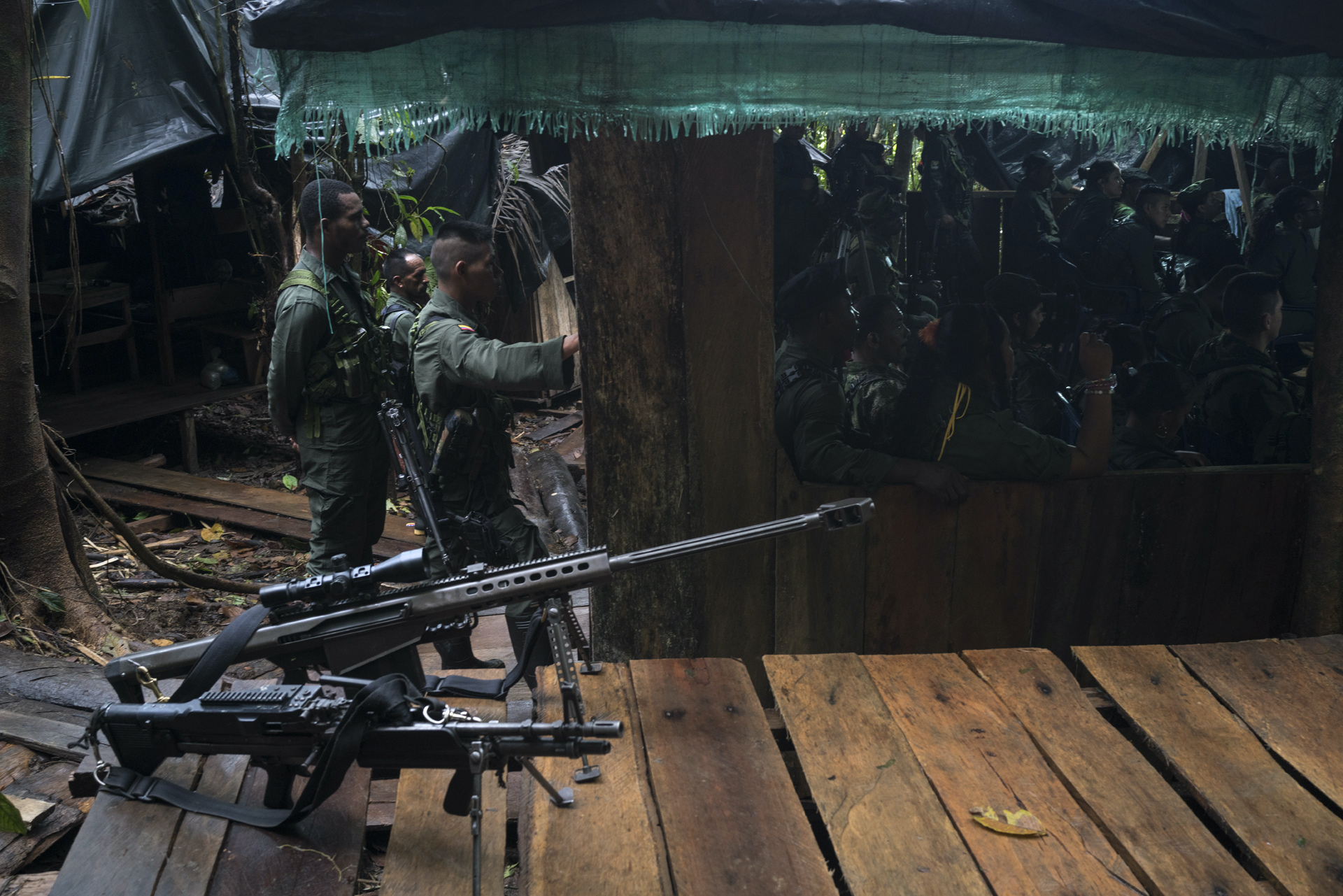
Many had not seen their parents since they had joined up a decade before or longer, and some became emotional when they spoke of their mothers or the siblings they had left behind. When it came to their futures, most declared loyally that they would do whatever “the Party” wished them to do, and also said that they wanted, somehow, to remain together with their comrades in peacetime. By the Party, they meant the Clandestine Colombian Communist Party, for which the FARC operated as an armed wing. But most had no clear idea what the world beyond the battlefield was like, much less what the future held for them. Some said they wished to be farmers, and a few were interested in “IT,” which they spoke of with the enthralled abstraction of youngsters talking about becoming astronauts. Metropolitan Colombia was a galaxy far from theirs, a reality they had only heard about. Others simply expressed a desire to finish elementary or high school. Few had ever lived in a city or even visited one, and most had scant skills other than knowing how to make and break camp, march in the jungle, operate a gun, and fight.”
— Jon Lee Anderson, The Eternal War
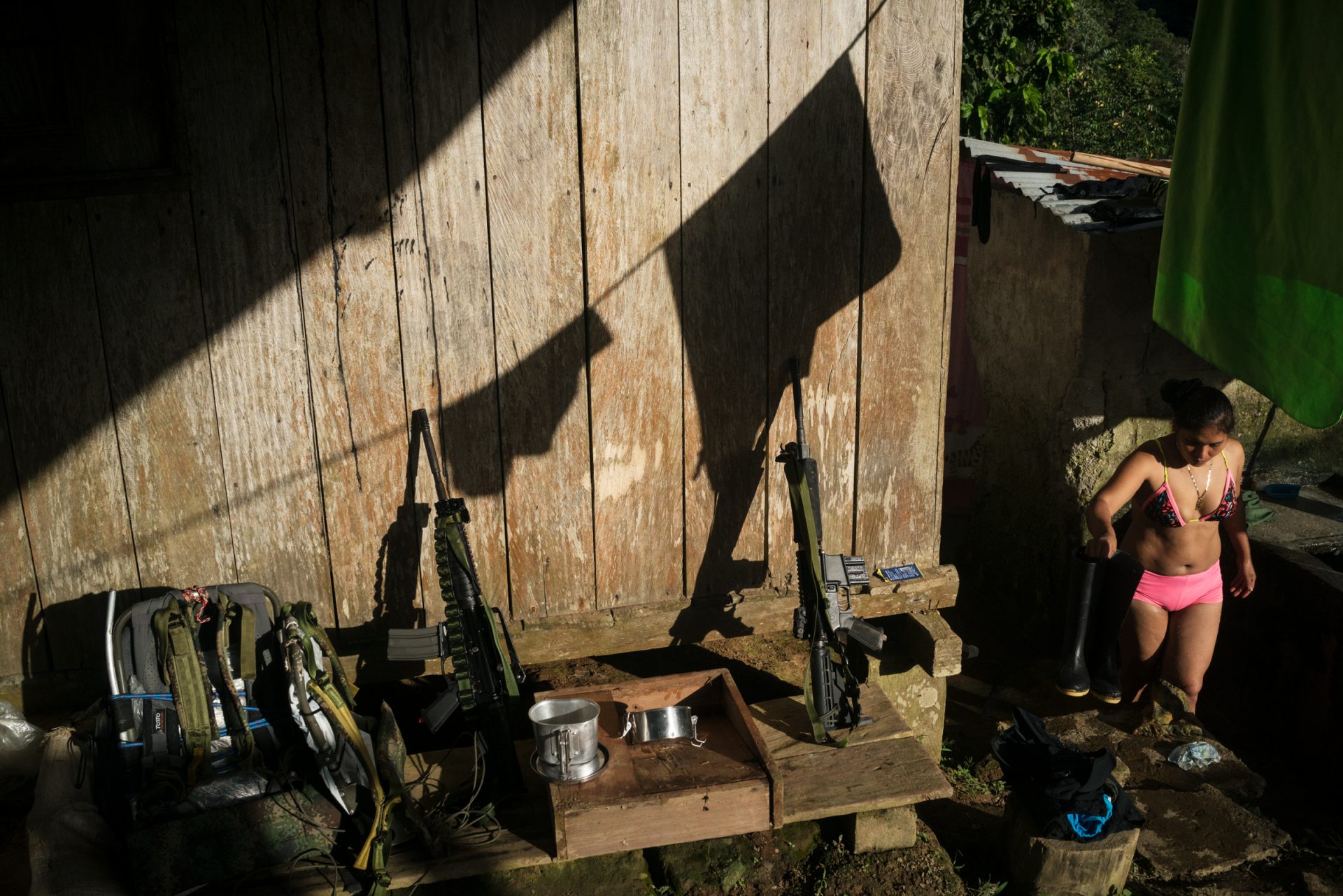
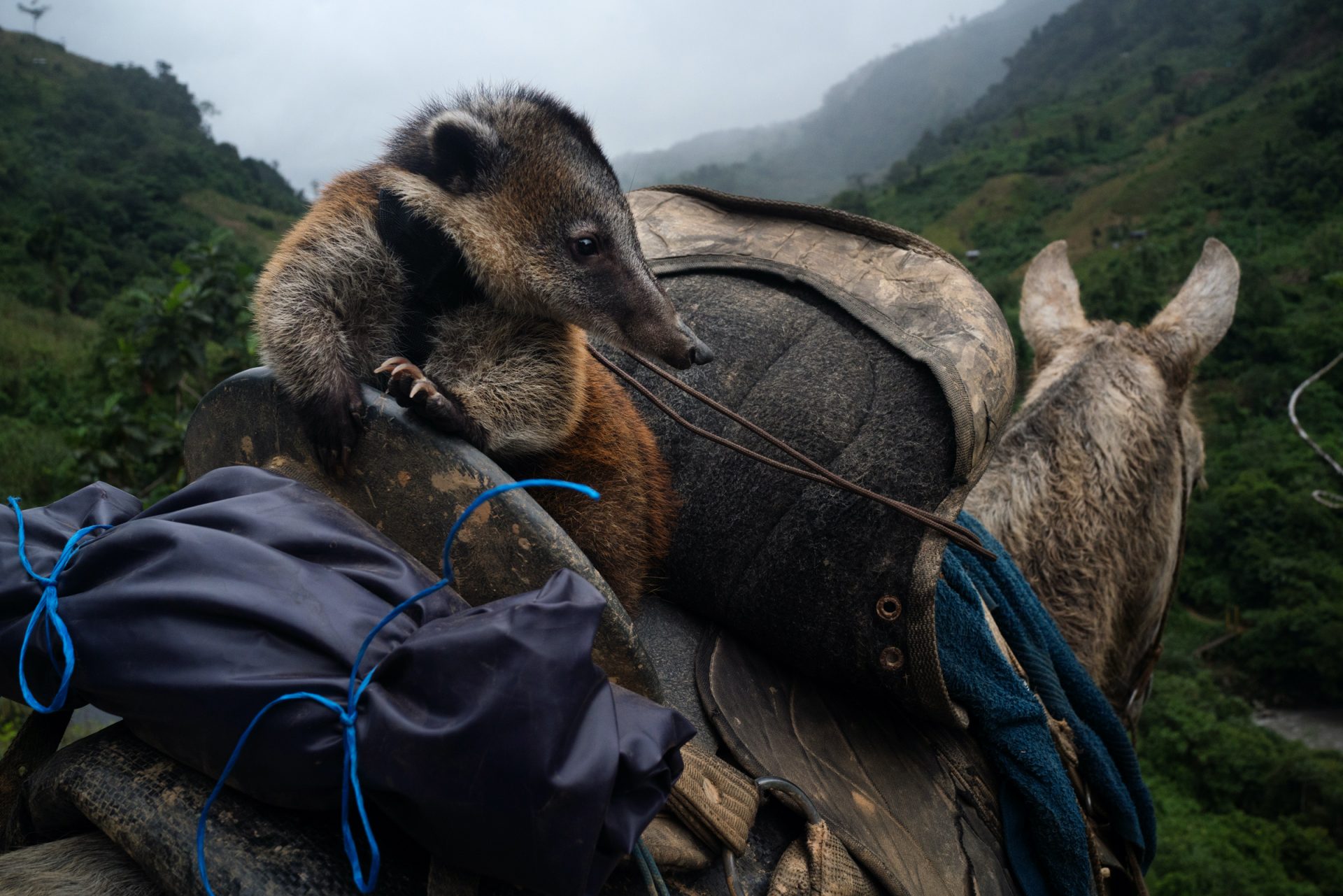
September 2016
The Santos government and the FARC reject violence and sign a peace deal ending more than 50 years of civil war
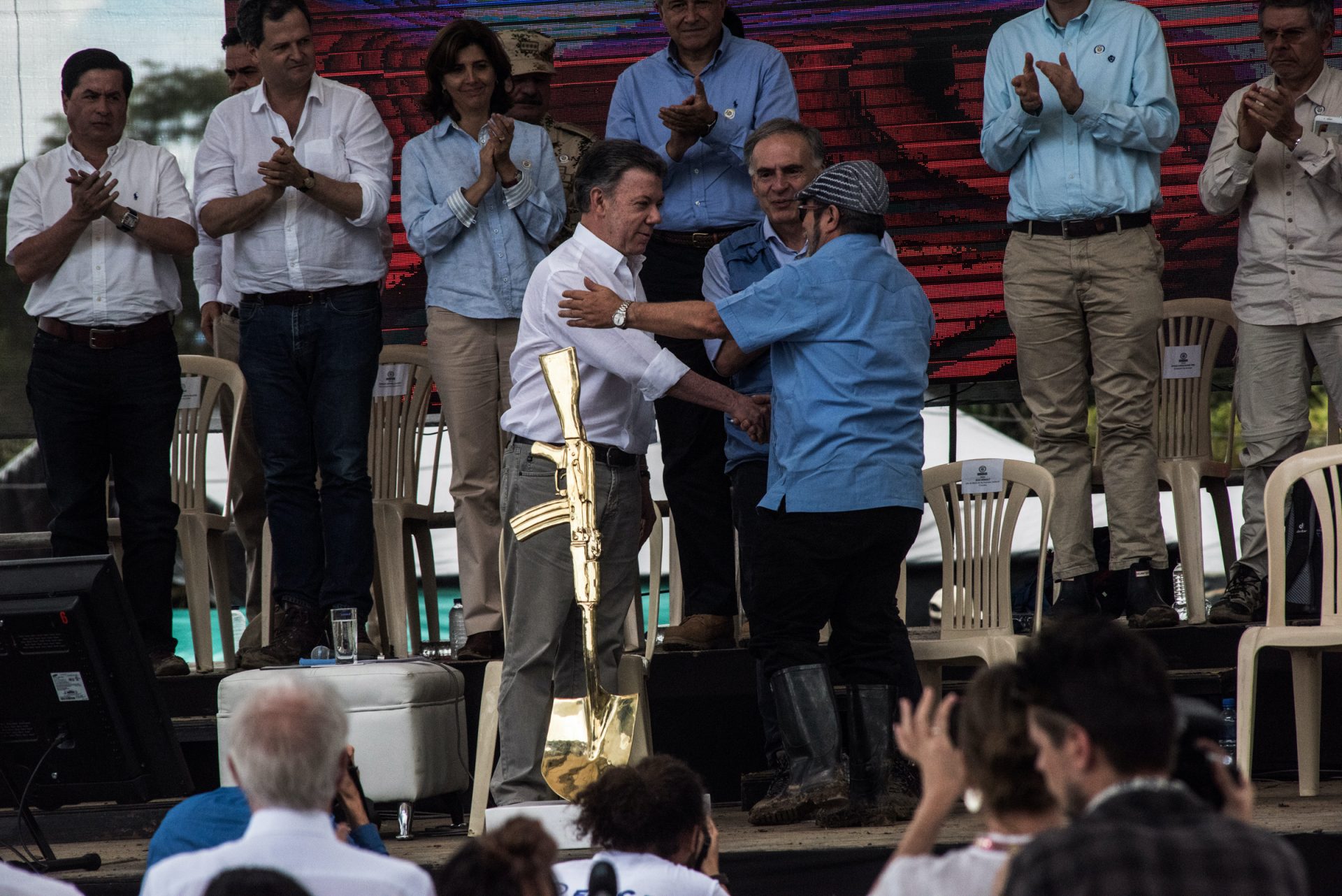
As Uribe’s defense minister, Juan Manuel Santos presided over these military operations without demurral. But when he succeeded Uribe—who had served his legal limit of two terms in office—and assumed the presidency himself in 2010, Santos resolved to be the man who would bring peace to Colombia. When he sent a trusted emissary to meet secretly with the FARC and sound it out about more substantive negotiations, the FARC expressed its willingness. Even so, in November 2011, when Santos’s military high command informed him that it had discovered the location of Alfonso Cano, Marulanda’s successor as the head of the FARC, Santos took a calculated risk and authorized an attack. He reasoned that if the FARC was already ready to talk, it would carry on with or without Cano. (“I told them: ‘Quemanlo—burn him,’” Santos said to me some time afterward.) Cano was shot and killed as he tried to escape. And sure enough, before long, Cano’s successor, Timochenko, continued the dialogue with Santos.”
— Jon Lee Anderson, The Eternal War
October 2016
In a shock national referendum the peace deal is rejected by a margin of 0.3% of the vote
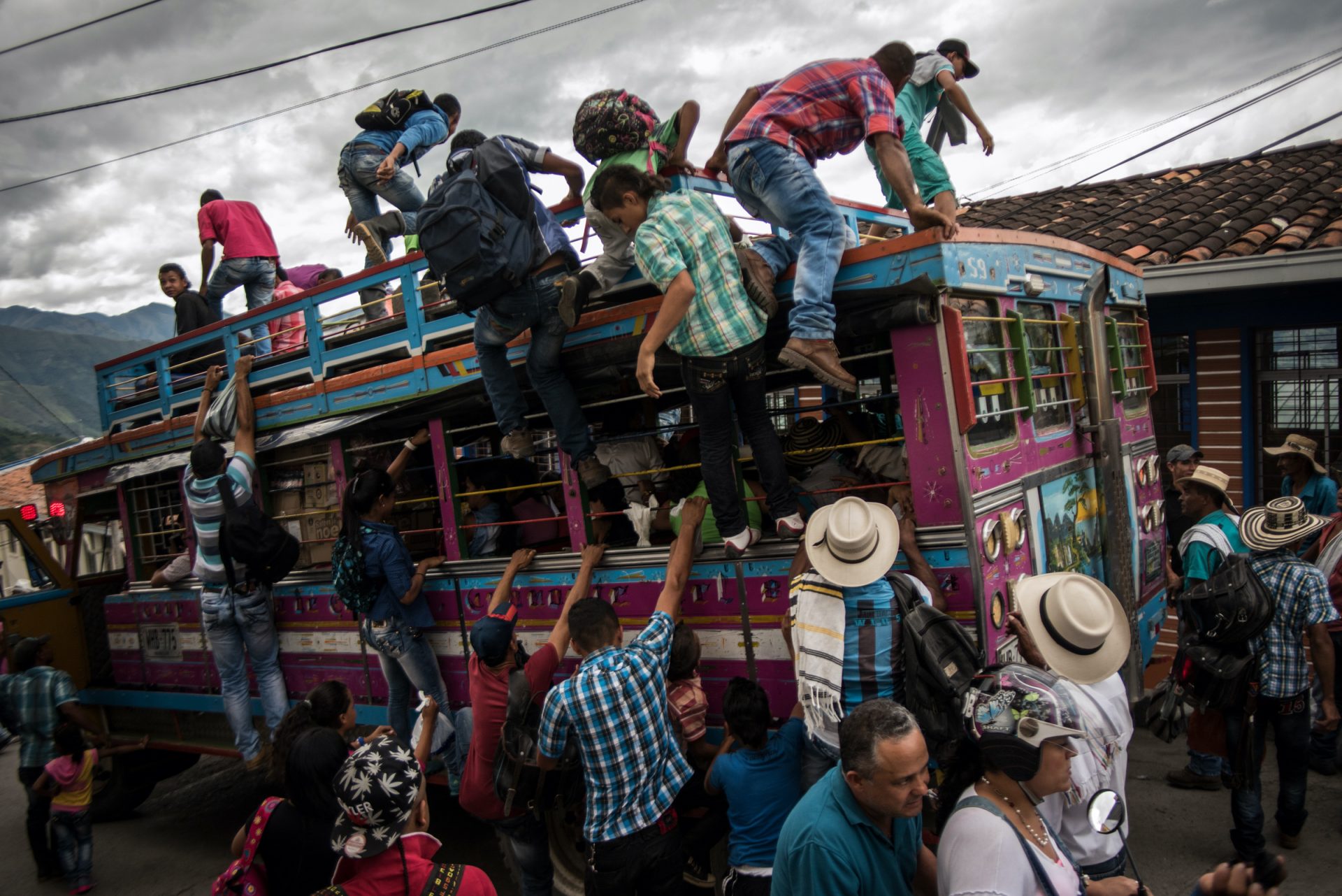
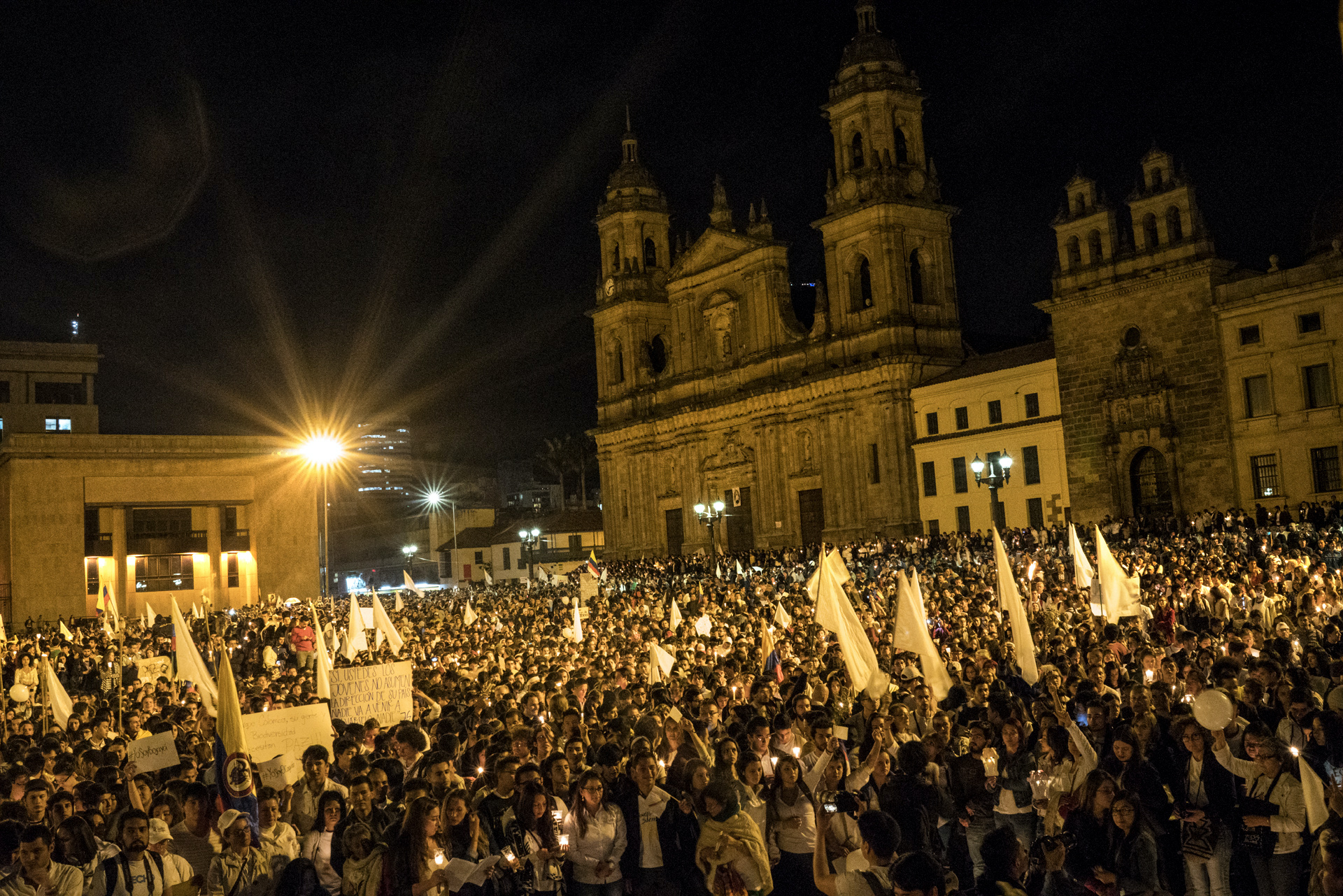
October 2016
5 days after the referendum Santos receives the Nobel Peace Prize
He goes on to renegotiate the peace deal with concessions, Santos does not take it back to the people but sends it directly to Congress for ratification.
2017-2020
An offshoot of FARC dissidents continue to fight government forces along with remnants of the EPL and ELN
The resumed fighting has called into question the viability of the peace accord.
In 2017, the first year in which there was no war between the state and the FARC, the country’s immediate “peace dividend,” as President Santos referred to it, was dramatic. Tourism to Colombia surged by a remarkable 27 percent, representing some 1.5 million more foreign visitors than in 2016. It was a noticeable spike in a trend that had begun with Santos’s presidency, in which talk of peace and a successful overseas tourism promotion campaign had brought increasing numbers of American, European, and Latin American travelers to Colombia. Venturing far beyond the handful of habitual tourist redoubts, visitors were horseback riding through coffee country, boating down the Magdalena River, and hiking among indigenous communities in the Sierra Nevada mountain range. Although the ELN guerrillas and some narcoparamilitares remained in the field, conflict-related casualties also declined precipitously.
Yet parts of Colombia remained in limbo. Beyond the emerging tourist circuits, in areas where the effects of the war had been the deepest, the power of the state remained virtually nonexistent, and violence continued to haunt the countryside. Paramilitary drug-trafficking gangs were moving in and taking over coca-growing areas that the FARC had formerly controlled. Cocaine production in Colombia was skyrocketing, and, in addition to Mauricio’s Columna Uno, more former guerrillas were now getting involved in the business. A merciless former FARC fighter called Guacho led one breakaway group, operating in the jungle on the border with Ecuador. In a sickening episode in April 2018, Guacho kidnapped, and then executed, a pair of Ecuadorean journalists and their driver who had strayed into his territory.
In other areas from which the FARC had withdrawn, right-wing paracos also began to rear their heads again. Around the same time that Uribe’s campaign against the peace deal got underway, in fact, early warning signs had appeared in the form of stenciled graffiti on walls around San Vicente del Caguán, a town adjacent to the FARC’s Yari stronghold. The signs featured a submachine gun and the initials AUC, and said: “We are back and have come to stay.” The group’s purpose, added the message, was “to purge FARC militiamen and front men”—an allusion to the guerrillas’ civilian sympathizers and noncombatant allies.”
— Jon Lee Anderson, The Eternal War
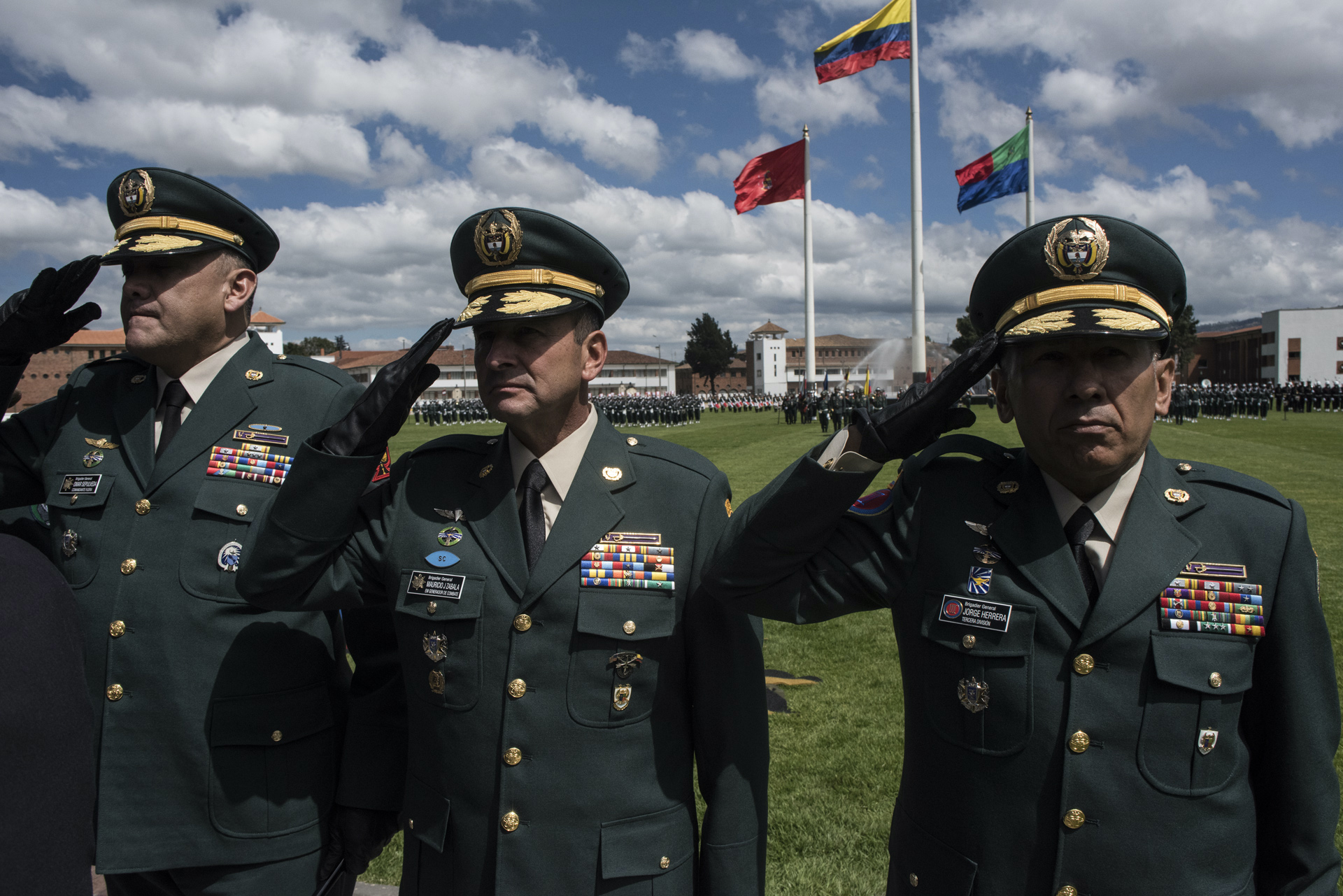
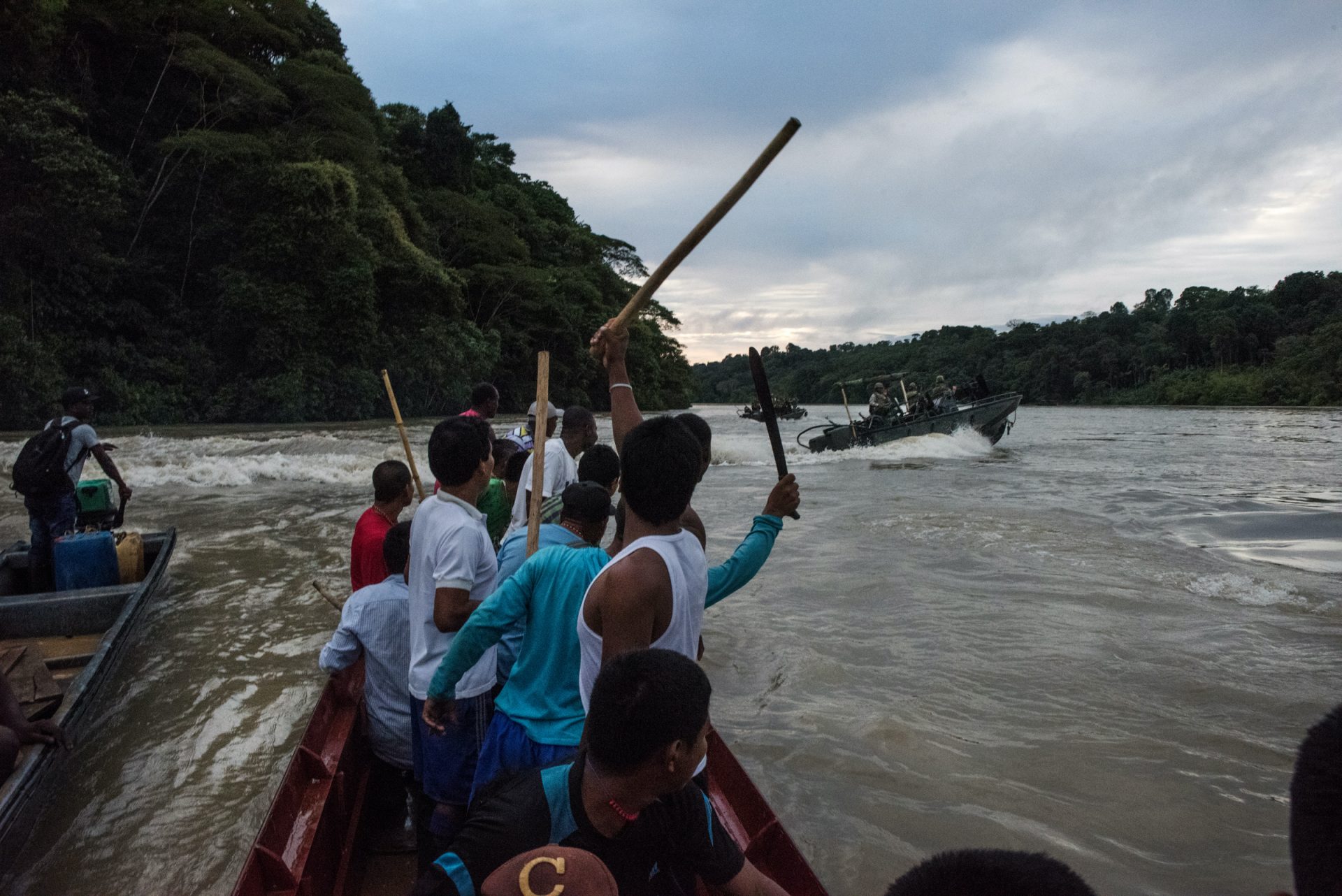
One of the farmers’ biggest ongoing problems was ensuring that the land restitution that the Santos government had promised didn’t stall. Years had gone by since their return, but the government still hadn’t granted them titles to their lands. This had left things in the area in a dangerous limbo; the paraco-linked landowners knew that if they could chase the farmers off again, they might yet be able to control all the land in the area. As Fernando explained: “The paracos always take over the land wherever they go, but they’ve found out that on our little piece of land there’s a group of people who are willing to resist, and so they’re killing us.”
Fernando introduced me to a strapping teenage boy, Ramón Bedoya, whose father, Hernán Bedoya, had been one of the two Curvuradó leaders recently killed. After shaking my hand, Ramón looked intently down at the ground as Fernando spoke about his father and what had happened to him. I saw that he was fighting back tears. Fernando went on. “The war hasn’t stopped, not for us. They said there would be peace, but none of the promises made have been complied with, not where we live. The war is still going on here, and it’s over our land.”
— Jon Lee Anderson, The Eternal War
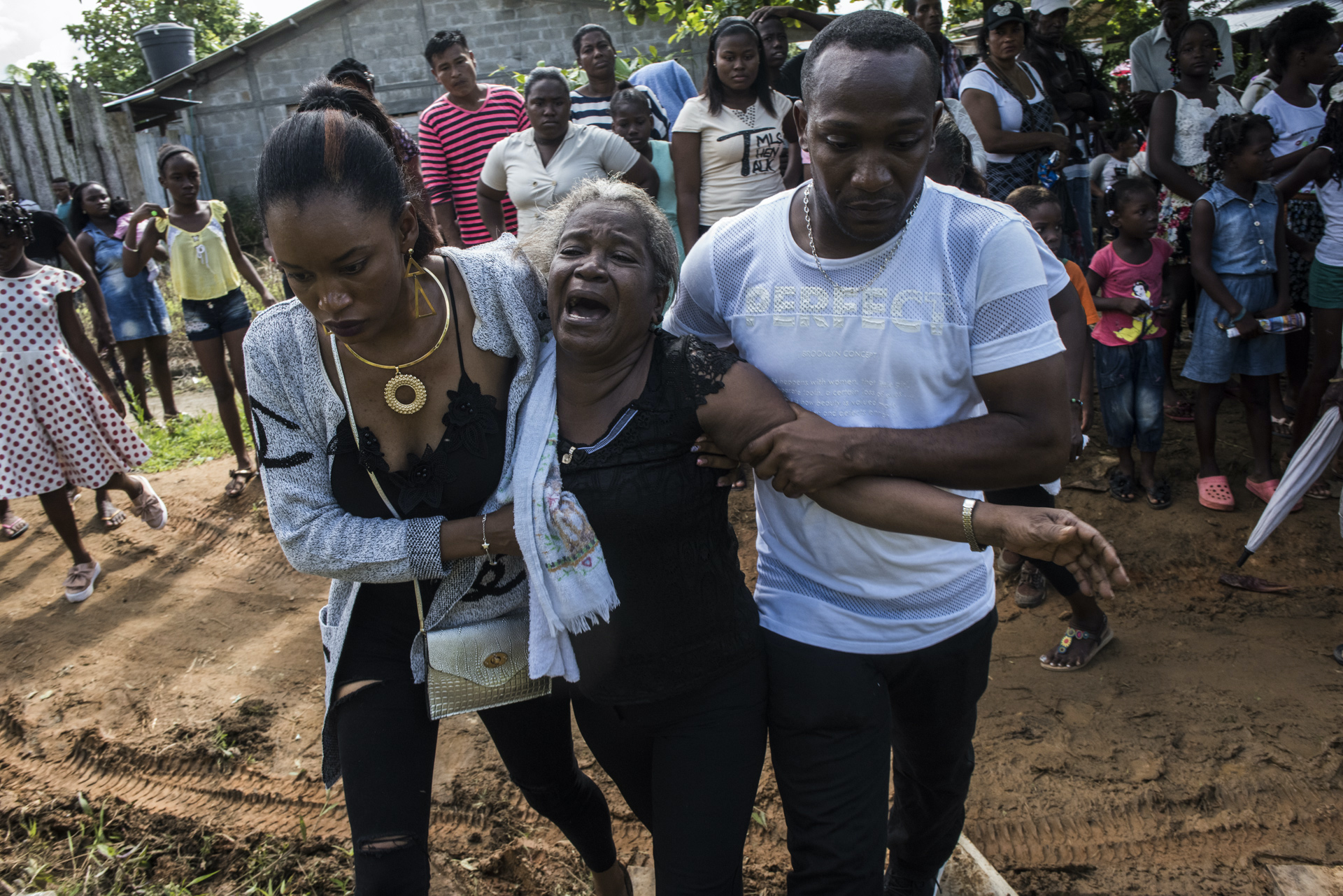
2018
Ivan Duque, a conservative in opposition to the peace deal, wins the Presidency in Colombian elections
FARC perform poorly but retain the allocated seats negotiated through the peace deal

